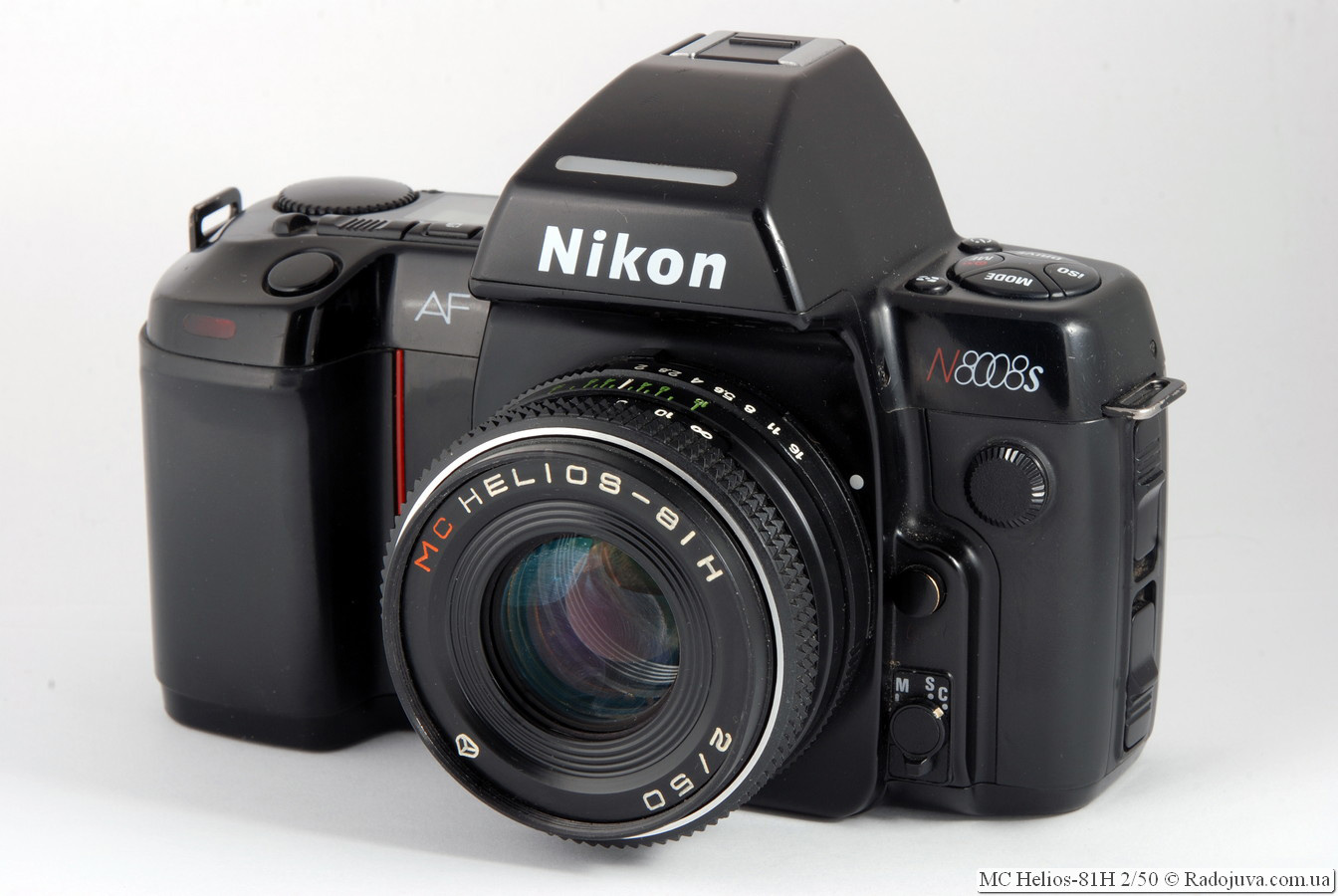
MC Helios-81H 2/50 lens on the camera Nikon AF N8008s. Enlarge Image.
In short
MC Helios-81H 2/50 (or MC Helios-81H 2/50, or Arsat H 50mm 1: 2) - is one of the best standard lenses of Helios family... This lens is most often called a 'fifty-kopeck piece' because of the focal length of 50mm. On full-frame cameras (film and digital cameras with a frame size of 36 x 24 mm) it is standard (in terms of focal lengths and angle of view) and is suitable for everyday use for a wide range of tasks. Helios-81 can also be used as a portrait and creative lens on modern cropped cameras.
In my opinion, Helios-81 earned its popularity due to its compatibility with Nikon digital SLR cameras with Nikon F mount. The bulk of the lenses of the Helios-81 family do not require any adapters and work similarly to the original manual Nikon Nikkor AI / PRE-AI lenses. ...
Also, the popularity of the lens is associated with a special twist of the background, inherent in many lenses of the Helios family, as well as good optical capabilities at a fairly low cost. On average, Helios-81N can be found for $ 30.
Critical: there are many different versions of the Helios-81 H/M/AUTOMATIC family of lenses. If the latest versions are indeed some of the best standard lenses from Helios family, then early versions are the worst... Early versions are easily distinguished by their wide focusing ring and serial number near the front lens. These options have many mechanical problems. Later and better versions have a serial number in small print on the side of the aperture control ring. Here is such a paradox - from the best to the worst is just a step. I strongly advise against messing with these early versions (shown, for example, in the 'Appearance # 3' section). And also by no means do not purchase lenses marked 'AUTOMATIC'... Lenses series Helios-81N AUTOMATIC have a different mount, for which there are no adapters for any cameras (the appearance of lenses HELIOS-81 2/50/53 AUTOMATIC shown here). If something is not very clear, or if you want to be 100% sure that the future purchased lens will please you - ask here in the comments, or contact me according to my personal contacts.
It is difficult to overestimate the creative potential of such fifty dollars. Photo enthusiasts often use it as a portrait lens. Many people just want a fast prime, especially in addition to their stock / kit lens. Aperture F / 2 approx. three steps wider aperture of f / 5.6, which is used in 'dark' kit lenses at the long end. In numerical terms, this means that Helios-81 is approximately 8 times brighterthan, for example, whale Nikon DX VR AF-P Nikkor 18-55mm 1: 3.5-5.6Gwhich use a maximum relative aperture of only 50: 1 over a 5.6 mm focal length. The calculation of the difference in the relative aperture (count the aperture) is performed elementarily: (5.6 * 5.6) / (2 * 2) = 7.84, which is rounded to the value '8'.
History
Helios-81 is a descendant of the Helios-65 (HELIOS 65 AUTOMATIC 2/50), which, in turn, is a shortened descendant of the lenses family Helios-44.
The Helios-81 lens family includes many models and their modifications. In general, the development of the line proceeded as follows: Helios-81 AUTOMAT -> Helios-81 M or N -> MC Helios-81 M or N -> MC Helios-81 N -> Arsat H. Each of the modifications has several subversions.
For practical use, the latest versions of MC Helios-81 H (aka 'MC HELIOS 81 H') and Arsat are best suited for which the serial number is indicated in small print on the lens barrel, and not near the front lens.
Appearance # 1
Lens shown below MS HELIOS-81H 2/50 with serial number 9227112, presumably produced in 1992. The front and rear lenses of the objective have cyan, blue, lilac, violet and red anti-reflective shades.
Appearance # 2
Lens shown below MC HELIOS-81H 2/50 with serial number 9315003, presumably produced in 1993. The front lens of the objective has green, purple and red shades of enlightenment.
Appearance # 3
Lens shown below MS HELIOS-81M 2/53 with serial number 8204223, presumably produced in 1982. Filter diameter 49 mm. The front lens of the objective has blue, lilac, violet, red and yellow anti-reflective shades. The petals of the diaphragm are shiny, yellowish-orange (copper-colored). The focus ring rotates 315 degrees (7/8 of a full turn). Three intermediate clicks between F / 2 and F / 2.8 and two intermediate clicks between the other pairs of f-numbers (rare). Does not sit on without alteration Nikon D70, D70s, D80, D90... Nikon is installed on the rest of the CZK without problems. No protrusion for the diaphragm rheostat, with a long 'skirt' of the diaphragm control ring (but the skirt does not rest against the diaphragm rheostat). Nikon F mount, letter 'M' stands for 'M' blinking aperture.
Appearance # 4
Lens shown below ARSAT H 50mm 1: 2 with serial number 9417121, presumably produced in 1994. The front lens of the objective has green, purple and blue shades of enlightenment.
Appearance # 5
Lens shown below HELIOS-81N 2/53 with serial number 8309805, presumably produced in 1983. Filter diameter 49 mm. The front lens of the objective has bluish and ash shades of enlightenment. The diaphragm blades are shiny, silvery. The focus ring rotates 315 degrees (7/8 of a full turn). Three intermediate clicks between F / 2 and F / 2.8 and two intermediate clicks between the other pairs of f-numbers (rare). Does not sit on without alteration Nikon D70, D70s, D80, D90... Nikon is installed on the rest of the CZK without problems. No protrusion for the diaphragm rheostat, with a long 'skirt' of the diaphragm control ring (but the skirt does not rest against the diaphragm rheostat). Nikon F. mount.
Main technical specifications MC Helios-81H 2/50
| The name of the instance from the review (as it is written on the lens itself) | MC Helios-81H 2/50 with the logo of the Arsenal factory (there are a lot of other ways to write the name of the lens) |
| Basic properties |
|
| Front Filter Diameter | 52 mm (there are options for 49 mm) |
| Focal length | 50 mm (according to some sources - 52 or 53 mm), EGF for cameras with an APS-C type sensor is approximately 75 mm |
| Zoom ratio | 1 x |
| Designed by | for film cameras with a frame size of 36 mm X 24 mm |
| Number of aperture blades | 6 petals. Petals form a hexagon of approximately the correct shape. Petals are dull metal, not blackened. |
| Tags |
|
| Diaphragm | From F / 2 to F / 16.0, it is regulated by the aperture ring, there is no diaphragm operation method switch on the lens. The ring has one intermediate fixed value between the indicated pairs of numbers (between F / 11 and F / 16 there is no intermediate value). |
| MDF (minimum focusing distance) | 0.5 m, maximum magnification ratio is 1: 7 (approximately) |
| The weight | 214 grams measured without caps (lens itself only) |
| Optical design | 6 elements in 4 groups, ('Planar' type scheme) |
| Lens hood | screwed into the front filter, the original lens hood markings were not found. Any analogs are suitable, according to type of such |
| Manufacturer country | USSR, Arsenal plant (later the lens was produced under the 'Arsat' brand in Ukraine). |
| Period | Several years, the exact period of production is unknown. |
Lens modifications
Please note that there are many modifications of the lens and many spellings of its name. The main ones are:
'AUTOMATIC' versions
- Helios-81 2/50 Automatic - you can see an overview of this modification here
- Helios-81 2/53 Automatic - you can see an overview of this modification here
- Helios 81 2/50 Automatic (no dash between 'Helios' and '81')
Versions 'М 2/53'
- Helios-81М 2/53 with H-mount, metal silvery unblacked petals, you can see an overview of this modification here
- Helios-81М 2/53 H-mount, copper colored metal petals not blackened
- MS Helios-81M 2 /53 H-mount, copper-colored, unblacked metal petals (appearance # 3 from this review)
Versions 'H'
- MS Helios-81H 2/50 (with serial number near the front lens, long skirt of the aperture control ring, wide focusing ring)
- MS Helios-81N 2/50 (serial number from the bayonet side, short skirt of the diaphragm control ring, lilac enlightenment, one of the most common and classic options)
- MS Helios-81N 2/50 (serial number from the bayonet side, short skirt of the diaphragm control ring, green enlightenment, one of the most common and classic options)
- MS Helios-81N 2 /53 (appearance # 5 from this review)
- Helios-81Н 2/53 (analogue of Helios-81M 2/53)
- ARSAT H 1: 2 50mm - an almost complete copy of MC Helios-81N 2/50, the differences are described here
- MC Helios-81h 2/50 - full copy of MS Helios-81H 2/50, export version, this version looks like like this.
- MC Helios-81 2/50 - full copy of MC Helios-81N 2/50, export version
Other versions
- Helios-81 2/50
- Helios-81 2/52 (diaphragm ring on the front of the lens)
- Helios-81 (GK-81)
- GOI << HELIOS-81 >> 2 / 52,4 (silver metal case)
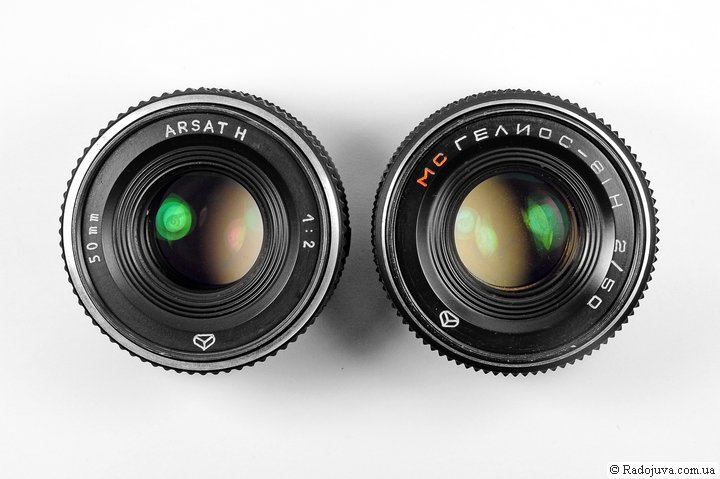
Just different names: ARSAT 1: 2 50mm МС ГЕЛИОС-81Н 2/50
Optically, they are the same lens. The difference between lenses with different names lies in different mounting threads or mounts, body rims, enlightenment and age. Many new lenses MS Helios-81Nreleased in Ukraine (after the collapse of the Union) are called Arsat. This review discusses one of the most popular lenses, namely MS Helios-81H 2/50.
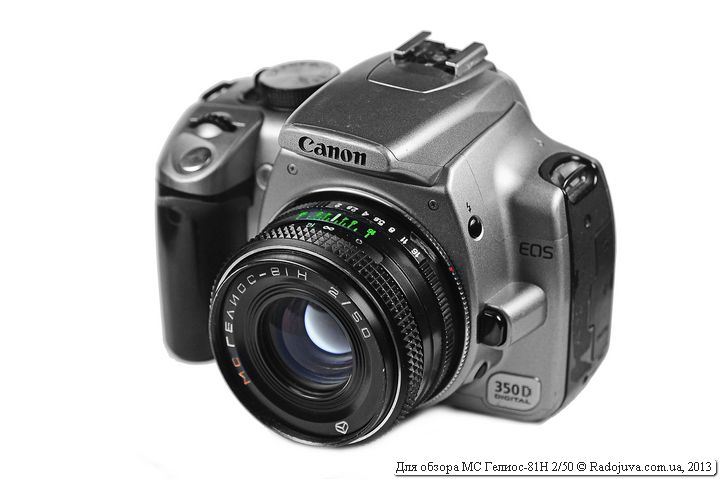
View of the Helios-81N MS lens on a Canon EOS camera 350D Digital The lens is mounted using a cheap adapter Nikon mount F - Canon EOS.
As usual, the first thing you feel and pay attention when using the old lens is its weight, the lens is small, very short, it resembles a pancake. The weight of this “pancake” is quite large. The build quality is usual - a lot of metal and glass. The lens has no backlash.
Interesting: 81-H is read not as 81-'ash ', but as 81-'en'. Easy to remember 81-Nikon, as 'H' mount is Nikon F mount (Nikon F mount)
MS Helios 81-N produced at the Arsenal plants in Kiev or Uman in Ukraine. The lens used special lanthanum glasses - super-heavy crowns with high resolution, this allows you to partially get rid of chromatic aberrations.
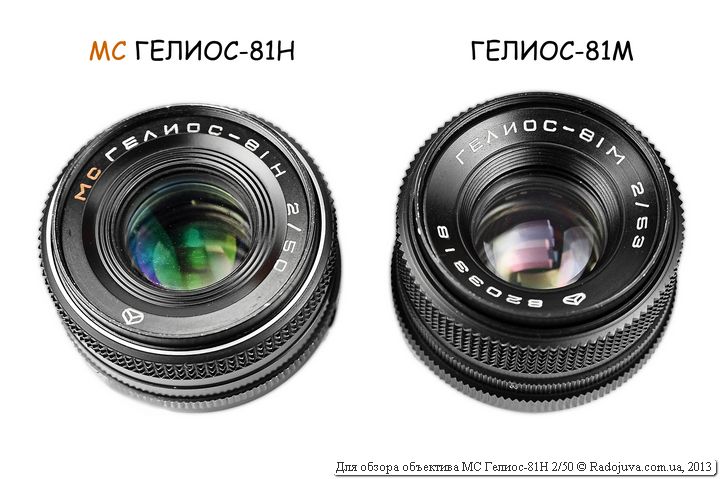
So there are two versions of the Helios 81 lens
How to use with modern cameras
Nikon F-mount DSLRs
To use the Nikon MS Helios-81H 2/50 lens on Nikon DSLR cameras just install the lens without any adapters and shoot for your own pleasure without any tangible limitations. Possibility focusing on infinity, as well as semi-automatic iris control... This is due to the fact that MC Helios-81H 2/50 uses the same bayonet mount (mount type) as the native Nikon lenses. All lenses from cameras Kiev-17, Kiev-17m, Kiev-18, Kiev-19 and Kiev-19m, Kiev-20 use the Nikon F mount, the same as that of modern Nikon DSLRs. Some cameras will even have automatic metering exposure. Exact list of cameras that support metering exposure with manual lenses (such as this one) you can see here or here. For more information on how to use manual lenses, see my article. Soviet optics.
Important: although the lenses MC Helios-81N 2/50 have a protrusion for transmitting the aperture value to the camera through the aperture rheostat (copy AI Nikkor Lenses), while the diaphragm skirt may be too long (like PRE-AI Nikkor Lenses) because some Lenses Helios-81 2/50 without additional modification cannot be installed on modern Nikon DSLR cameras. Some can only be installed on a specific list of cameras. To treat such a disease can be very simple - just cut off part of the diaphragm control ring, as shown in the figure by Sergei Elizarov here.
It's important: if you come across a lens that does not sit on your camera and you don’t want to cut it, you can still easily use the lens on any Nikon DSLR with macro rings... MC Helios-81N 2/50 can be easily installed on any Nikon F cameras via Any extension tube for Nikon F-mount cameras... However, this loses the ability to focus to infinity and medium focusing distances.
Important: to immediately find a variant of MC Helios-81H 2/50, which can work on any Nikon F-mount SLR camera, you need to look for lens options with the name MC Helios-81H 2/50 (or MC HELIOS-81H 2/50) and without a serial numbers near the front lens, as well as any lens variants with the modern name ARSAT.
Important: if something is not clear, or there is a desire to clarify - write in the comments under this review, I and other readers will try to suggest.
Nikon 1 mirrorless cameras
To use the lens on a series of mirrorless cameras Nikon 1 (Nikon 1S1, Nikon 1S2, Nikon 1 V1, Nikon 1 V2, Nikon 1 V3, Nikon 1 J1, Nikon 1 J2, Nikon 1 J3, Nikon 1 J4, Nikon 1 J5, Nikon 1 AW1) use the adapter Nikon F - Nikon 1. The cheapest adapters can be found aliexpress.com. For example, such an adapter can be easily purchased. here.
Important: there are no problems with any versions of Helios-81 for Nikon F mount (Nikon 'N') and any corresponding adapters.
Nikon Z mirrorless cameras
To use the lens on a series of mirrorless cameras Nikon Z use an original Nikon FTZ adapter.
You can use any inexpensive Chinese analogue, for example, such an adapter Nikon AI -> Nikon Z.
Important: there are no problems with any versions of Helios-81 for Nikon F mount (Nikon 'N') and any corresponding adapters.
Canon (EF, M, RF)
In order to install MC Helios-81N 2/50 on any modern digital SLR camera Canon EOS, you will need to use the adapter Nikon mount F - Canon EOS. Possibility focusing on infinity saved. The cheapest adapters can be found aliexpress.com. For example, adapter Nikon mount F - Canon EOS EF (aka Nikon AF-> Canon EF) easy to buy here.
It's important: all lenses of the Helios-81H family (with 'H' / 'Nikon F' mount), regardless of the year of manufacture and the features of the mount, can be installed on any camera without any problems Canon EOS using the specified adapter Nikon mount F - Canon EOS EF (aka Nikon AI-> Canon EF).
To use the lens on mirrorless cameras series Canon EOS M use adapter Nikon F - Canon EOS M (aka Nikon AI-Canon M). The cheapest adapters can be found aliexpress.com. For example, such an adapter can be easily purchased. here.
To use the lens on mirrorless cameras Canon EOS R series, use an adapter Nikon F - Canon EOS R (aka Nikon AI-> Canon RF). The cheapest adapters can be found aliexpress.com. For example, such an adapter can be easily purchased. here.
Sony (A, E)
Using the lens with SLR cameras Sony (DSLRs as well as SLT cameras with a translucent mirror) is difficult. For use, an adapter with a corrective lens should be used, which may negatively affect the image quality. If you still want to use MC Helios-81N 2/50 on cameras Sony / Minolta with A-mount, use the adapter Nikon F - Sony A. The cheapest adapters can be found aliexpress.com. For example, such an adapter can be easily purchased. here.
To use the lens on mirrorless cameras Sony NEX, Sony ILCE, Sony ALPHA with Sony E mount or Sony FEjust use an inexpensive adapter Nikon F - Sony E. The cheapest adapters can be found aliexpress.com. For example, such an adapter can be easily purchased. here... Also available for these cameras autofocus adapter Techart PRO Leica M - Sony E Autofocus Adapterwhich can be found at this link.
FUJIFILM (X, GFX)
X-mount mirrorless cameras require an adapter Nikon F -> Fuji X (aka AI-> X). The cheapest adapters can be found aliexpress.com. For example, such an adapter can be easily purchased. here.
For mirrorless medium format cameras with mount GFX need adapter Nikon F -> Fuji GFX (aka AI-> GFX). The cheapest adapters can be found aliexpress.com. For example, such an adapter can be easily purchased. here.
SIGMA / PANASONIC / LEICA (L, M)
An adapter is required for mirrorless cameras with Leica L mount (T, TL, SL) Nikon F -> Leica L (aka AI-> L). The cheapest adapters can be found aliexpress.com. For example, such an adapter can be easily purchased. here. For cameras with a Leica M mount need adapter Nikon F -> Leica M (aka AI-> M).
PENTAX
Using a lens with Pentax SLR cameras is difficult. For use, an adapter with a correction lens should be used, which can adversely affect image quality. If you still want to use Helios-81H 2/50 MC on Pentax cameras with K mount (and its modifications), then you should use the adapter Nikon F - Pentax K. The cheapest adapters can be found aliexpress.com. For example, such an adapter can be easily purchased. here... The same goes for a mirrorless camera. Pentax K-01.
To use the lens on Pentax mirrorless cameras with Pentax Q mount (Pentax Q, Pentax Q10, Pentax Q7, Pentax Q-s1)just use an inexpensive adapter Nikon F - Pentax Q. The cheapest adapters can be found aliexpress.com. For example, such an adapter can be easily purchased. here.
Samsung (NX)
NX mount mirrorless cameras require an adapter Nikon F -> Samsung NX (aka AI-> NX). The cheapest adapters can be found aliexpress.com. For example, such an adapter can be easily purchased. here. For the camera Nx mini adapters do not exist yet.
OLYMPUS / PANASONIC / KODAK / XIAOMI (mirrorless, MICRO 4/3)
To use the lens on mirrorless cameras OLYMPUS/PANASONIC/KODAK/ XIAOMI (and some others) with a Micro 4/3 mount, it is enough to use an inexpensive adapter Nikon F - MICRO 4/3. The cheapest adapters can be found aliexpress.com. For example, such an adapter can be easily purchased. here.
OLYMPUS / PANASONIC / LEICA (mirrors, 4/3)
For SLR cameras with a 4/3 mount (not to be confused with Micro 4/3!) An adapter is required Nikon F-> 4/3. The cheapest adapters can be found aliexpress.com. For example, such an adapter can be easily purchased. here.
Attention! Lenses of the HELIOS AUTOMAT series
Very important: the lenses Helios-81 2/50 AUTOMATIC и Helios-81 2/53 AUTOMATIC cannot be used with modern cameras. Simply there are no corresponding adapters. Attackers often give out Helios-81 2/50 Automatic (a review of this modification you can see here) и Helios-81 2/53 Automatic (a review of this modification you can see here) for the lens MC Helios-81N 2/50. Be attentive!
Sample photos on Nikon DX (APS-C, crop 1.5X)
Below are my photos for different modifications of the Helios-81 / Arsat H lens:
Jpeg source photos watch and / or download here (200+ photos on Nikon D40).
Sample photos on MC Helios-81H and Nikon FX (full frame, Full Frame)
All photos were taken on a Helios-81N MC and a full-frame camera Nikon D700 FX no processing. Reduced size to 1920 * 1080 pixels and imprinted data from EXIF.
UPDATED
Photographer shared examples of photos on MC Helios-81N 2/50 with readers of Radozhiva Lilia Nemykina:
My experience
I like Helios-81N, with it you can feel the spirit of Soviet lenses, get nice shots and feel like a real manual technician (a photographer who uses manual lenses).
Unfortunately, I must state the fact that in general this fifty kopeck piece loses in many respects to any autofocus similar lens. Helios-81N is very popular, but still, if possible, I recommend using autofocus fifty dollars. Some of them, for example, Nikon 50 / 1.8 AF MKI / II / III (D) (for cameras with a focus motor) or Yongnuo 50 / 1.8 (for any Nikon cameras) are only slightly more expensive than the Helios-81N.
Video review
My video review of the Helios-81 lens family with examples of photos you can see on my Youtube channel, or in the video below:
Results
Latest modifications of Helios 81H - some of the best standard Soviet high-aperture lenses... First of all, Helios 81H is interesting for its twisted bokeh, compact size and low cost. Among the shortcomings, one should single out the difficulty in searching for the “latest” MS modifications and an unblacked diaphragm.
Comments on this post do not require registration. Anyone can leave a comment.
Material prepared Arkady Shapoval.

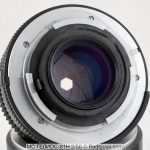
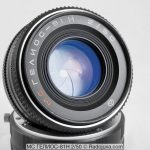
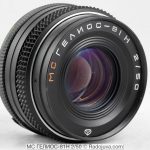
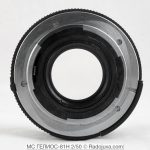
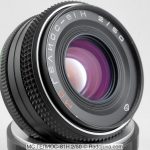
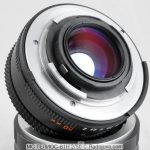

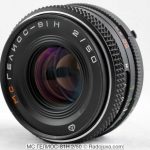
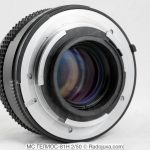
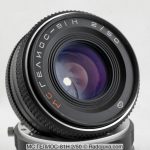
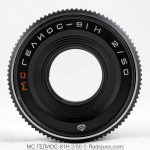

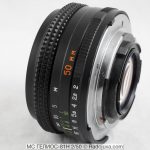
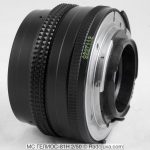
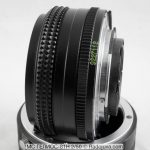

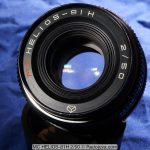
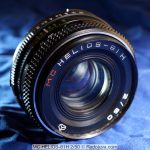
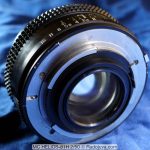


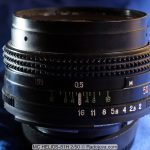
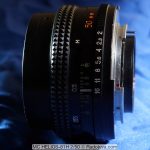
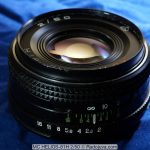
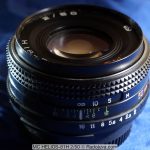
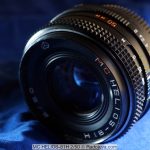
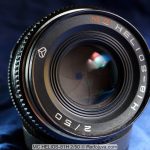
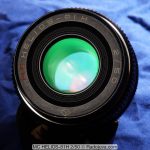

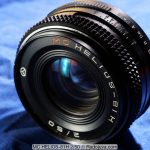
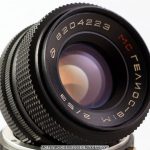
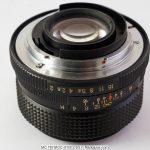
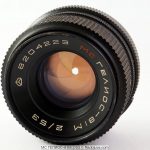
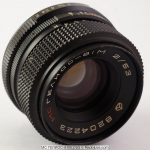
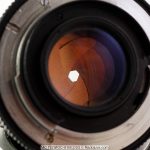
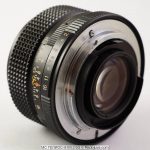
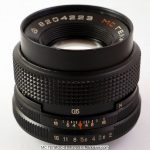
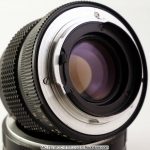
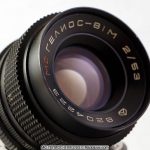
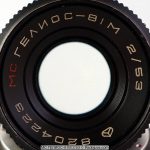
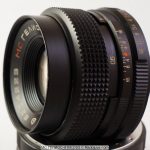
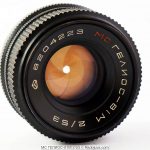
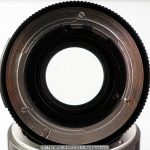
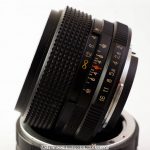
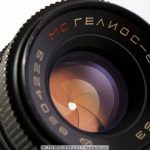
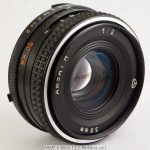
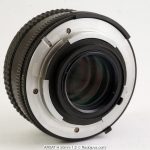
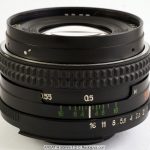
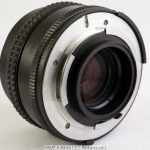
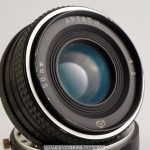
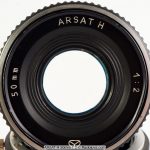
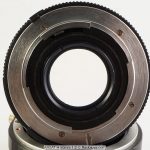
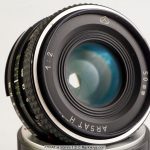
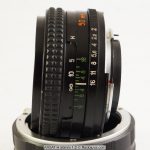
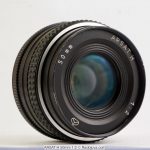

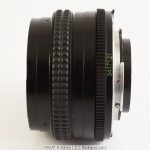
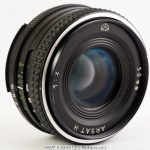
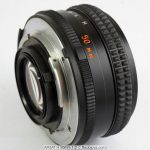
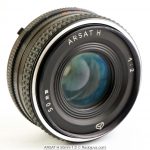
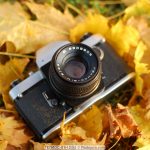
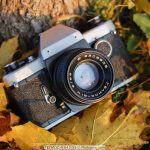
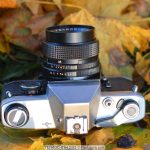


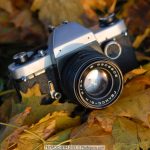
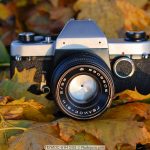
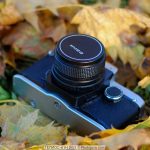
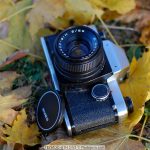
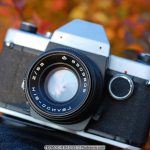
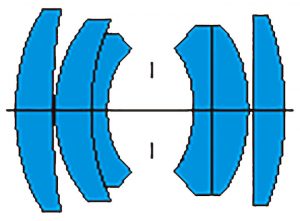
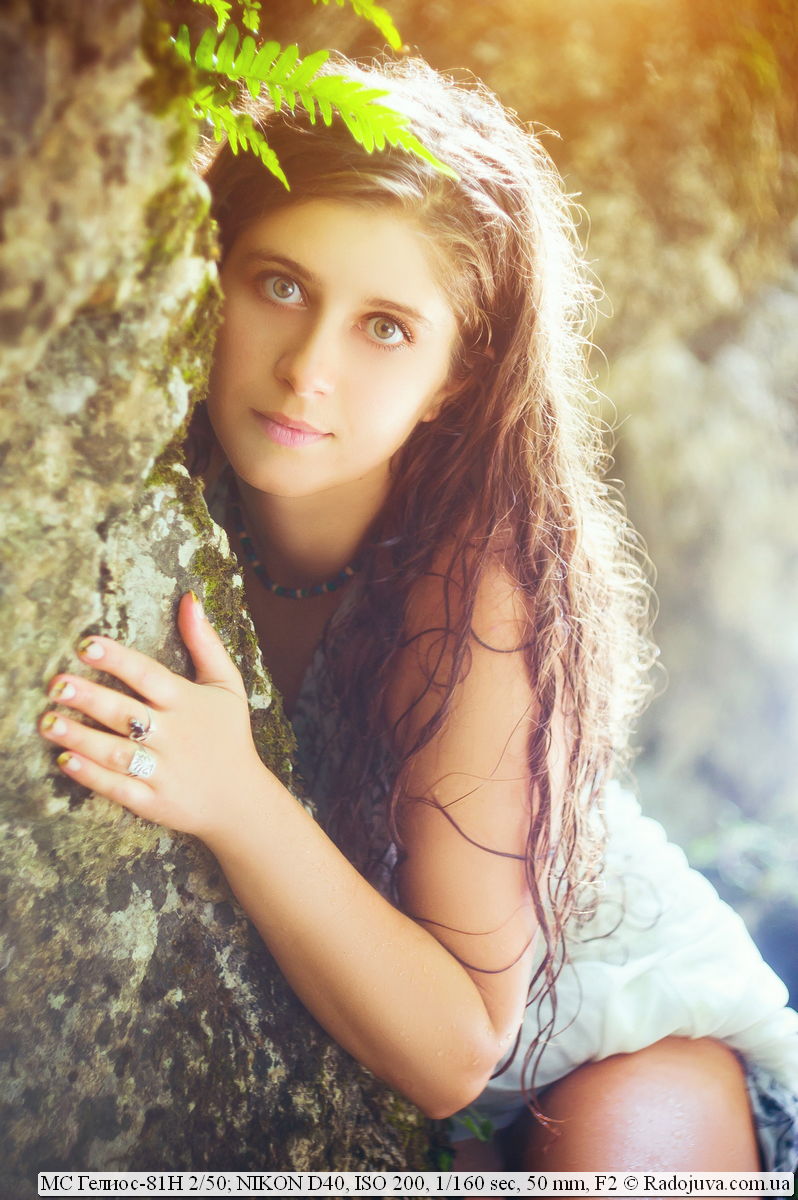
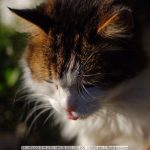








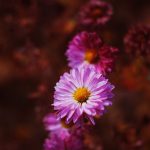
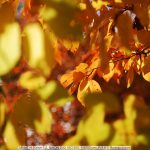
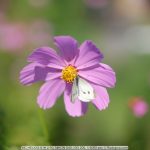

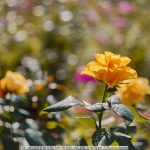

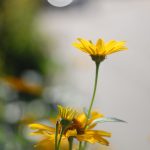


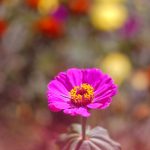

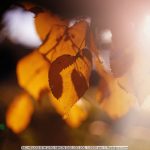

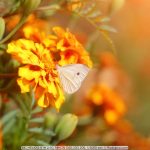

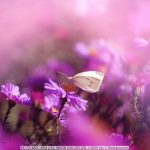

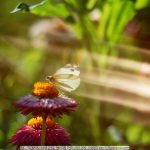
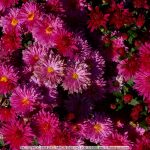

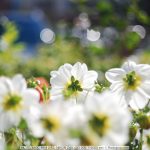





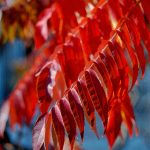

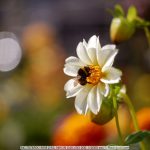











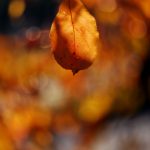
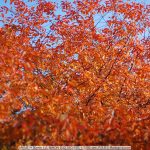
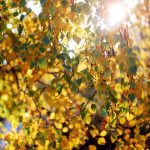
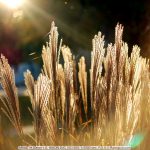
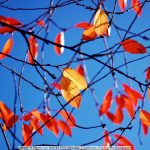


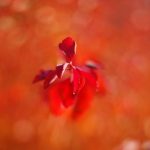



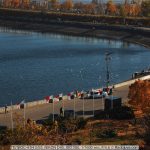






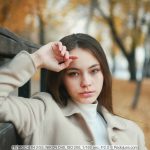


























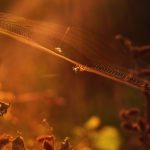
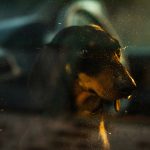





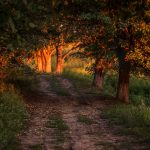



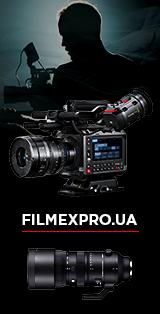
Arkady, please tell me, on helios-81n, blackened petals or not ??? Can you tell me which years it is better to choose a lens ???
Yes, blackened, opaque, weakly reflect light. It is better to choose just a copy in good condition and take it Helios-81n, and not Arsat. They say that the Arsats are worse. In fact, I did not see any difference between the lenses. For everything else, it is written in this review.
Arkady, unfortunately, not all Helios-81N have blackened petals. I have an MC Helios-81N in perfect condition from '85, with a bronze / brass diaphragm. It also has a thread for M49 filters. I took it from a collector from another city, he said about the diaphragm, but about the carving - somehow both kept silent.
Thank you so much for the answer!
Please help, how to assemble it? After a time, the diaphragm worked (it closed, then no). Dismantled, cleaned, assembled, now does not return automatically, and the diaphragm ring spins tightly
Disassembly is a delicate process, I will not help in this.
Do not be sad, you need to type in the search engine the name of the lens and the word "repair"
Arkady, what can you say about the state of these lenses on helios-81n http://ge.tt/3GH7KyP?c, is it possible to buy such a lens, the front lens bothers me, will this somehow affect the photo? The mechanics on this lens are good, and they are asking for a very small price! Thank you earlier, with respect, Roman!
Of course, abrasion of the front lens will affect image quality. I can’t suggest the strength of influence. I would not buy.
thank you very much, I will not buy!
I fixed the diaphragm, another problem got out, on the diaphragms from 2 to 8 there was a specific blur (although everything was fine before, a clear center and an excellent bokeh along the edges). From 8 onwards, everything is fine, sharp, sharp. What can be wrong?
When the lens was assembled back, it was not assembled correctly.
And what exactly could not have been delivered correctly?
Lenses could get micro clearance, but whatever.
I figured it out, the rear lens dangled, tightened and everything became OK
I'm glad that everything worked for you.
which lens will be better. old helios or ukrainian arsat?
It will be better one that has been preserved as a whole. The difference between them is minimal.
Here is my example photo with Helios http://cs407519.userapi.com/v407519988/5823/4-KjhF96iUs.jpg
Compare fifty dollars and 35-tku is not entirely correct.
please tell me. I was looking for Helios-81N, I found Helios-81m, they said that it was filed and stands on Nikon without an adapter. everything is fine, got up like a sweetheart. only sometimes you take a photograph, one shot is taken, overexposed, the other is taken, without changing anything - dark, almost black. because of what could it be?
The diaphragm may stick.
But can I fix it?
Yes, you can.
You can disassemble, you can wipe the aperture blades, but I do not advise you to do it yourself. It's not easy, you need to have straight arms and nerves of steel)), especially when assembling the diaphragm ...
First, try to remove the lens and manually move the diaphragm lever, if it returns poorly, you can try to slightly shorten the spring.
http://www.foto-info.ru/objectives/17/
I have just arsat, I use it on Nikon D100, there are no complaints on an open aperture, but on a closed one there is very poor sharpness in landscapes, a shallow depth of field when shooting from a distance of 1-1,5 m (compared to Helios 44-2, although the values the same - 16). At first I thought the jump rope does not work, but I compared the photo with the same shutter speed at aperture values of 2 and 16, it is noticeable that at 16 the photos are a little darker. Can the jump rope not close to the end?
At 16.0 this is usually the case, the diaphragm often does not close to the end.
By the way, the previous owner gave him a clean
Is bokeh on DX better than on FX? Or did I misunderstand you?
Bokeh is a subjective parameter. It strongly depends on the background itself, so it turns out that if you try, then on the DX you can get a picture just as good as on the FX, which in fact, in some way, is confirmed by the examples of photos in this review on DX and FX
I have this lens. Good thing. The only thing I don’t like about it is that it gives a certain blue tint in the photo, it can also be described as fog or haze in the photo. This is not visible on the camera screen, but when you take off the pictures on the computer, everything is very visible. In principle, this defect is easily cleaned in the FS by auto-correction of contrast and colors, but still, can anyone give practical advice? Here is an example of what it is about http://s1.hostingkartinok.com/uploads/images/2012/11/1ee38bf1fd5eaed60de574b60c127c04.jpg There is an assumption that this is the only one I got. Visually, the glass is perfect after the "overhaul", :) But if you look at it and look closely at the light, you can see the play of light in the form of stains, reminiscent of gasoline stains on the water, can this be the case?
If the stains are similar https://radojuva.com.ua/wp-content/uploads/2011/04/helios-77m-4-obzor-1.jpgthen this is a normal condition.
Yes, such, but only on the glass itself.
And with this “blue” what to do? Is it possible to clean it further in the FSH? Or is it possible to somehow cure it by some kind of glass processing?
BB can be shifted strongly in warm colors.
Let me add. My copy of Industar-61 lz ms, when used on PENTAX Kr, the same noticeably “leaves”, only in lilac shades. This effect is especially pronounced with underexposure. I can assume that these are either the features of domestic antireflection coatings, adjusted for the properties of our films, or the composition of the glass. And this can only be fought with the settings of the device or in the editor, as Arkady wrote and as you yourself thought.
May I ask the last question? :) After I focused on the video finder and the camera gave confirmation by blinking a green light, the photos still lacked clarity. You have to take pictures through the lifeview mode: I select the focus point, zoom using the digital zoom button on the camera, I focus and shoot. Shooting in this way takes a little longer, because mechanically, the camera performs more movements. I have to shoot with a tripod, or hold my hands like stone, to avoid blurry photos, and this, as you know, is completely inconvenient, from shooting through a video finder, when everything is removed much faster and more convenient, and the click itself happens instantly.
What is the actual question? The difficulty of picking through the optical viewfinder is present, usually you just get used to it.
The question is what that sensor in the video finder (I don’t know how it is called correctly) that is responsible for the focus. When it is on, it makes it clear that the focus is supposedly set, in fact, the focus is not precisely set, and you have to refine yourself in the way described above through the live view mode. Is it just such a feature and you really need to get used to it, or is it still a problem?
Just a feature of the focus confirmation point. Usually, she can lie a little bit towards the back or front. This is not a problem, you can cover the aperture to 2.8
I am thinking on my mind that it is correct to focus to see if the focus is to see in the lower side (closer). I don’t know the words correctly, explaining that you don’t mindfully feed.
Thanks a lot!
I recently acquired a used G-81N. When I installed it on my H-D5100 for the first time, everything was fine. When re-installing the display appeared the inscription - "The lens is not connected" and the camera does not take pictures with it. With the rest of the lenses the camera works normally. Please tell me, what could be the reason?
Put the camera in mode M.
You are SUPER SPECIALIST !!!! Many thanks!
Good day.
I have a D90. Helios-81H is the first lens after the whale 18-105. When the flash is on (built-in or removable), the shutter does not fire, the flash icon blinks on the LCD screen. Mode M. What could be the reason? Thanks in advance for your reply.
On younger cameras, such as the Nikon D90, the built-in and external flash will only work in manual flash control mode. Do not confuse manual camera control. In this case, you will need to independently set the flash power in the camera menu, as the camera writes to you. In the menu, the power is set from 1 \ 1 to 1 \ 128. For example, a power of 1 \ 32 indicates that the flash will only work at one-thirty-second of full power.
Find an extended answer here. https://radojuva.com.ua/2011/04/optika-na-nikon
Thanks. Everything worked out.
Fine. Do not forget to help the site.
Helios-81 is an excellent lens. One can say without exaggeration and false modesty - the Soviet Helios-81n is the best staff. It is very optically balanced both from a technical and, which is not unimportant, from an artistic point of view. I'm not sure that today, throughout the USSR, they can calculate such a lens better (primarily in terms of bokeh, where the power of modern computers does not really help much), and these are not just words. Of course there are (and have been) superior lenses in this and that. But - not at once in everything, and, moreover, not in price, and I am annoyed by hamsters who are aghul, everything that is connected specifically with the Soviet Union, including lenses. (Although, apart from such masterpieces as this one, and a dozen or two more, sometimes it also seems to me that, I emphasize - all over the world - excellent optics began in the 90s of the 20th century, and is still world manufacturers have not reached the ideal in all classes)
“I was very upset when I saw that my new“ AF Nikkor 50 / 1.8 ″, which I put off for several months, gives a much worse, out-of-focus picture compared to my Helios-81n ”.
- “AF Minolta Rokkor 50 / 1.7 cuts in the center starting from the open. But it doubles the lines and scratches "
Such a plan of messages on the Internet is in full swing. But, again, the 81st is an organic lens in all respects. For example Arsat 50 / 1.4 (Helios-123N) will give even more sharpness (and is more expensive, but this is a different class), but it catches rabbits more, despite the “MS”.
This is a real classic. It is also very innovative for its time, comfortable and cool to this day! You just have to have it “anyway”! Those who live in Ukraine shouldn't even think about it - it's cheap, for such a penny, when sometimes a lens filter sometimes costs more than the lens itself, buy even better new Arsat 50/2! You will not regret! And after you your children will be left with an “aristocratic” legacy and evidence of your high taste, which will never become outdated.
“Arsenal” must provide its own lenses for every inhabitant of Ukraine and the neighboring Zakordonya. This is of course a joke (in half), but I'll tell you this - read about Helios-44, read how it is praised (yes, yes, I also have it - and this is a cool lens of its kind). Read about Helios-77, etc., and then think about the fact that Helios-81n is no match for them! Oops. In the 44th, you need to add another lens to make it as sharp as Helios-81n! (by itself, not anyhow, but to recalculate the whole scheme, and you, of course, cannot do this, because adding a lens to the lens is not so easy.) Helios-81 focuses closer, and the “automatic” - with a jump rope initially, and everything works fine (if it works), and most importantly - HE DRAWS MUCH BETTER! The 44th, although I like it too, with its highly twisted bokeh will never “paint” the same way as the 81st. (The reason is in glass and calculation, but that's not about that now.)
He is such a cheap, but artistic (but also sharp) lens. It stands out for its bokeh and pattern among _ ALL_ Planar biotars! He, of course, is also a Planar, but in his best embodiment, and his planar shortcomings are minimized, or invisible, and the advantages that are called on are obvious ..
Personally, I, of course, am proud that this is a miracle, (unlike some other USSR masterpieces,) purely domestic, Soviet, on Soviet glasses, in the GOI, calculated, made in Kiev.
After the "collapse", "brain drain", and "privatization", "Arsat", KMZ, KOMZ and all other enterprises of the USSR still cannot, for more than 20 years now, well, they have not been able to add a Lushnikov adapter and a gear under an autofocus screwdriver. Bad night with our brains. Very bad. We can't come up with anything new. Thanks to the brown hole on Gorbachev's head.
So think for yourself.
You painted everything so beautifully. And about the drawing, and about the classics. And, the well-known sovkovian inferiority complex - to "poke around" everything that is someone else's so that "your own" looks the best.
I do not want to say anything about Helios lenses. There are excellent examples ... at a price that could have been bought before. What did you say that Helios 81H is one of the best in the world? Have you ever used Nikon ai, Nikon ai-s? And the Pentaxes of the same period? I'm not even talking about the fact that almost all the largest factories of photographic equipment of that USSR were exported under reparations to Germany in 47 ... Equipment, materials, and diagrams. And that the German factories did all this (almost the same) 50 years earlier ... That all these are schemes of Zeiss, Planars, etc.
Not pretty. There is a good lens. You are happy with it. Perfectly! Why “put others down”?
I decided to buy Helios 81N, and the other day a friend said that he would give me Helios 44 (which one I don’t know)! They seem to be similar, but at the same time they are different!)
Please tell me, should I buy Helios 81N? And then I'm completely confused! (
You can do one G-44
It is possible, but G 81n will be better, right?
If for a Nikon camera, it will be more convenient.
Good day ... Guys tell me it is very tight on the camera ((D7000 I'm afraid not to break something ...
But does it work?